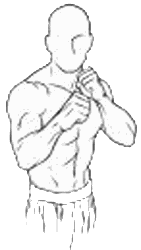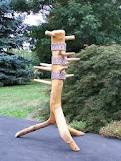My mom needed some eye surgery (which went great, by the way) so I was taking her to and from the surgicenter, and it took us passed a small shopping center. Though the façade had changed, the sign was the same, and I recognized the place where I had first begun my training in March or April of 1970. In that little shopping center had been a downstairs dojo. (Interestingly, it is a martial arts school today, a WTF dojang.) Needless to say, this had me going down memory lane.

Sensei George Dillman is turning 70, so I have also been thinking back to when we met. It was 1988 (as best I can remember). At the time, I had been training 18 years, and held nidan in JKA-Shotokan (proud to say that I was flunked in a dan exam by none other than Masatoshi Nakayama, and that I was passed in a dan exam by none other than Masatoshi Nakayama), and sandan in Isshin-ryu/AOKA. My experience at the time was that I found myself in various seminars and trainings not really learning anything because I already knew it. I remember how strange this felt, and how I missed the feeling of being a white belt – the feeling of enthusiasm and excitement.
The exception to my "I already know it" experience back then was trying to do stick work with guro Dan Inosanto. Stick drills give me a headache (partly because I have no rhythm.) Even today, I have the same problem training Arnis with my friends GM Ken Smith and GM Gaby Roloff [Gaby, who reassured me, over my protests, "Oh, Chris, your not a white belt"].
Jack Gustafson (an old acquaintance from the Shotokan organization I had been part of in the 70's) invited me to a Dillman seminar he was hosting. I attended with another Isshin-ryu practitioner (my kohai, for those of you who understand the meaning and implications of the word). When sensei saw our mizu-gami (the emblematic patch of the Isshin-ryu style) he exclaimed, "You're Isshin-ryu. You know this move from Seisan?" Yes, we responded. At which point, sensei grabbed my kohai and knocked him out.
After training we went to a Chinese restaurant. I sat at a table near sensei, and waited. I knew someone would bring up one of my recent articles in published in Black Belt. Sure enough, and sensei overheard. "You wrote that?" He asked. "Yes, and I would like to write an article about you," I replied.
I have just revealed a secret to you, if you care to pay attention. If you want to learn from a great teacher, you need to figure out how to gain access. Writing, I had learned, would give me unprecedented access, and I was never shy about that – I was determined to learn.
I remember how I felt going home after that first seminar – wonderful, like a white belt again, with so much to learn. But, the remarkable thing is that, today, nearly a quarter of a century later, I still feel the same way (ok, maybe more like a green belt), still so much to learn.
After that first meeting, I trained with sensei whenever I could and began to write about him immediately. When I sought to become his student, I did not expect him to accept me at sandan – I fully planned to put on a white belt and earn shodan under him. But, he simply told me, "You already know more than other sandans."
My fourth dan promotion came in my basement. We had finished a day of shooting pictures for one of our books. Sensei started to privately show me some new material, and said, "This is what I want you to work on for yondan." I thought he meant that I was to work on it to achieve yondan. But, what he really meant (which I found out when the diploma arrived) is that he was showing me what he wanted to work on as a yondan.
I don't really remember being promoted to 5th or 6th dan, but I do remember 7th. I found it to be an unsettling indication of my own ego, how quickly I became accustomed to wearing the red belt.
In the early 2000-sies, sensei asked me if I wanted to be an 8th dan. My exact response was, "Why would I want that?" He promoted me anyway, at his 60th birthday celebration in November, 2002. My promotion to 9th dan came October, 2010 (though it wasn't publicly presented until May of 2011).
Sandan – December 15, 1988
Yondan – August 1, 1991
Godan – July 25, 1993
Rokudan – September 29, 1996
Nanadan – January 15, 1998
Hachidan – November 23, 2002
Kudan – October 8, 2010
42 years of training – 24 of them with Sensei Dillman. Rank-wise, I've gone far enough by a long shot. And, if sensei told me today, that he was reorganizing DKI, and wanted to knock me back to white belt, I wouldn't care. I got into this to learn, and I've learned more than I ever imagined was possible – with so much to go. And I've gained far more than just knowledge, I've gained wonderful friendships, and an extended family. And for nearly a quarter century, I've been able to count George Dillman as my dear friend, and my family – and that is maybe the best part of all.
Funny how life works, how pursuing a passion brings so many unexpected blessings. So, I wish George Dillman a Happy 70th Birthday, and my love, and my thanks. And I wonder what this journey has yet to bring. Whatever, comes, I know one sure way to face it – just keep training.
So, thanks for reading.
Now, go train.
Chris Thomas














